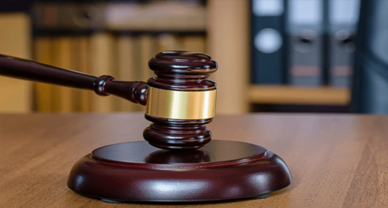OTR Wheel Engineering, Inc. and Others v. West Worldwide Services, Inc. and Others
Both Plaintiff and Defendant are in the business of selling industrial tires. OTR sells a tire called “Outrigger” which has a registered trade mark and trade dress. The defendant, with the motive of obtaining business from one of OTR’s customers (Genie), approached OTR’s supplier (Superhawk) for sample tires from OTR’s moulds. Superhawk gave West the OTR Outrigger tires made for Solideal (One of OTR’s partner), and later Genie stopped buying the same tires from OTR and started buying them from West. OTR, among other things, claimed trade dress infringement and counterfeiting and reverse passing off against West.

The trial jury found West guilty of reverse passing off under the Lanham Act but not for trade dress infringement, trade dress counterfeiting, trade secret misappropriation, or tortious interference with a contract between OTR and Genie. Instead, it held that OTR’s trade dress was invalid and fraudulently obtained. This order was set aside as a matter of law by the district court and later challenged by the Defendant. The jury awarded OTR with damages.
Judgment
Four main issues were discussed by the court concerning the Lanham Act.
For the issue of reverse passing, it held that, “West did not simply copy OTR’s intellectual property but passed off genuine OTR products as his own, so we affirm the judgment holding him liable for reverse passing off”.
Over the issue of OTR obtaining its trade dress through fraud on PTO, the court affirming the district court’s decision held that the defendant has failed to provide convincing evidence for the same.
The third issue was related to OTR’s trade dress protection being invalid. Over this the court upheld the jury’s finding and declared the mark as invalid.
The last issue discussed was of trade dress infringement. OTR’s trade dress was found to be unregistered as the PTO examiner had rejected the application on grounds of functionality and non-distinctiveness. While claiming infringement against West, OTR did not state that its claim was of an ‘unregistered’ trade dress. The court upholding the jury’s decision denied OTR’s motion for a new trial. It rejected its proposed instruction.
Section 43 of the Lanham Act protects against infringement of unregistered marks and trade dress as well as registered marks.
The Trademark Modernization Act of 2020 came into force in December 2020 in the US bringing some of the substantial change in the Lanham Act hoping to better protect the consumer from the confusion with regards to the source of the goods and service. This also brings some of the substantial change with regards to the expeditious address of the fraudulent trademark filing. Reducing the evidentiary burden of the trademark owner and resolving the circuit split. Some of the few changes and takeaways could be as follows-
Office Action Response Time
15 U.S.C 1062(b) provides with the refusal of registration, amendment of application, and abandonment. It says that if the applicant is found not entitled to registration, the examiner shall advise the applicant thereof and of the reasons therefor. The applicant shall have a period of six months in which to reply or amend his application. The new Act provides greater flexibility in setting the deadline. This act shortens the response deadline between 60 days to 6 months.
Third-party submission of Evidence
This act gives the freedom to the third party to submit evidence while the examination of the Trademark application, bearing the registrability of the subject mark, is going on. Evidence with regards to the use of the mark is false or inaccurate can be submitted by the third party. Earlier there was no filing fee and therefore no specific deadline to file the same. This act brings up the deadline of 2 months to review the evidence submitted by the director of USPTO while establishing the appropriate procedures for the same.
Challenge to Registration
In the US, the applicant must use the mark in interstate commerce before qualifying for the registration. The practice of not using the mark has seen a significant rise in the number of registration issued. The act comes up intending to significantly reduce the number of registration which falsely claims the trademark use in the interstate. The USPTO has seen a higher rate of incidence with regards to false claims. This is damaging the new market participants who want to build the brand and thereby seek protection for their mark. Previously, the proving of the fraudulently secured mark was a lengthy process, initiating the trademark cancellation proceeding. This Act provides the procedures to review and cancel registrations in an expeditious manner.
Author: Saransh Chaturvedi (Advocate, LLM (IIT Kharagpur) – an associate at Khurana & Khurana, Advocates and IP Attorney, in case of any queries please write back us via email at support@ipandlegalfilings.com or contact us at IP And Legal Filings.



